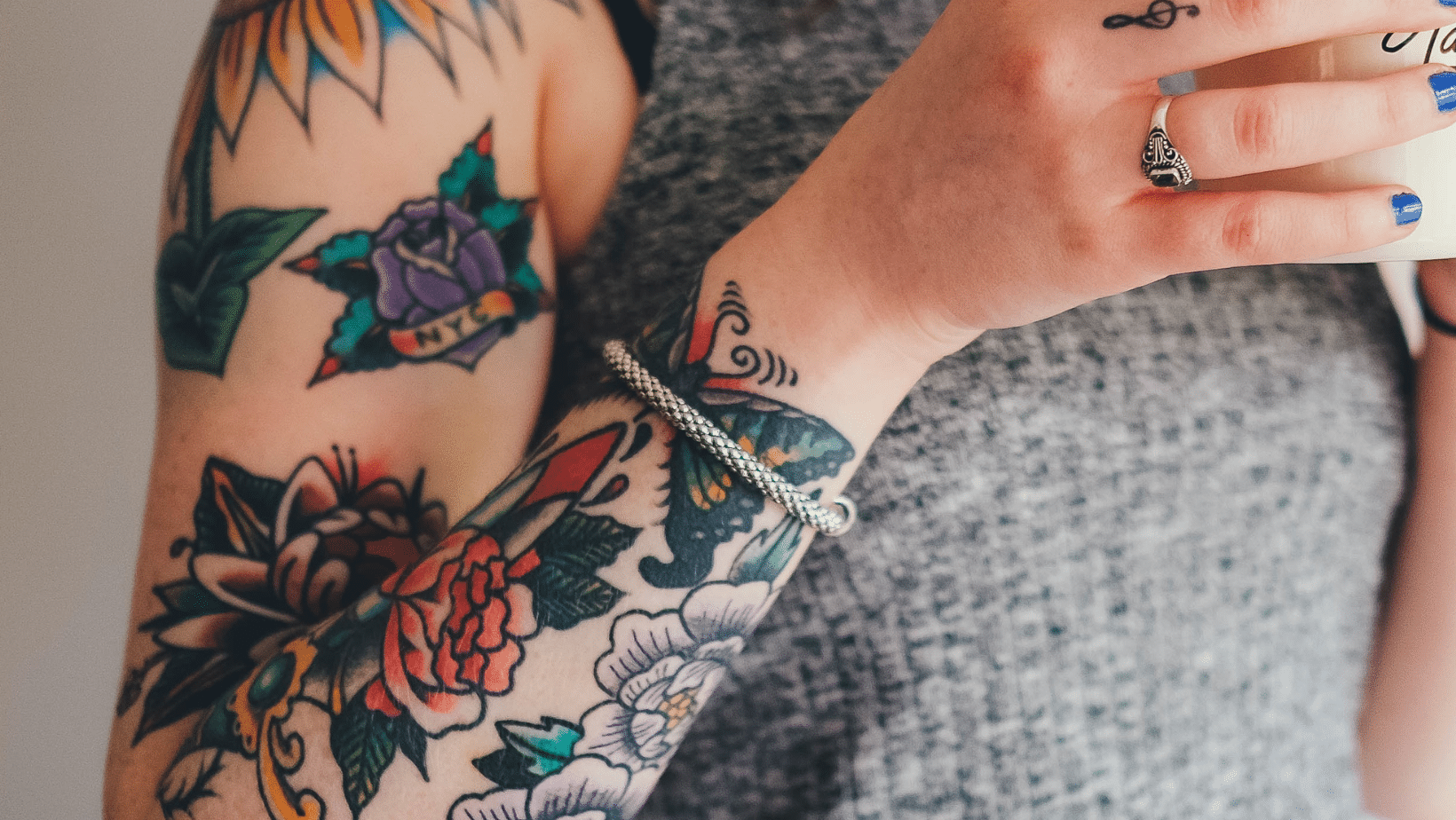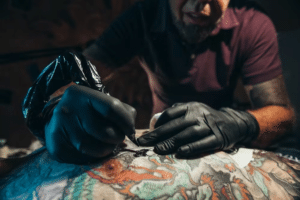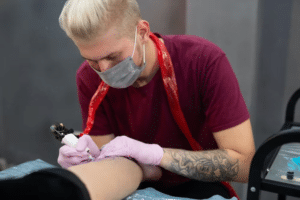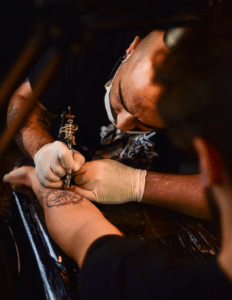 Tattoos
Tattoos have been used as a
form of self-expression for centuries, and they continue to grow in popularity today. Whether you’re getting your first or tenth tattoo, knowing how to properly care for it is important, especially during the crucial healing process.We understand the importance of caring for your new tattoo at Pearl Lemon, so we’ve created this essential guide to help you clean your new tattoo safely.This blog will cover the basics of tattoo aftercare, including why it’s important, what you should and shouldn’t do, and how to clean your new tattoo properly. We will also provide tips and tricks to make the process as easy and effective as possible.Whether you’re a first-time tattoo recipient or a seasoned ink enthusiast, you will find all the information you need to take care of your new tattoo and keep it looking its best. So, let’s dive in and learn how to clean your new tattoo!
Understanding The Healing Process Of A Tattoo

When you get a new tattoo, it’s important to understand the healing process to ensure proper care and avoid complications. Here’s an overview of the general
healing stages:- Inflammation (Days 1-6): Immediately after getting a tattoo, your skin will be inflamed, swollen, and red. This is a normal response to the trauma of getting a tattoo, and your body sends white blood cells to the area to help heal.
- Scabbing and Flaking (Days 7-14): As your tattoo starts to heal, you may notice scabbing and flaking. This is also a normal part of the healing process, as your body works to repair the damaged skin. It’s important not to pick at the scabs, as this can cause scarring or damage to the tattoo.
- Itching and Peeling (Days 15-30): As your tattoo continues to heal, it may start to itch and peel. This is a sign that the outer layer of skin is shedding, and new, healthy skin is growing underneath. It’s important not to scratch or pick at the tattoo during this stage.
- Fully Healed (Weeks 4-6): After several weeks of proper care, your tattoo should fully heal. At this point, the skin should be smooth, and the colours should be bright and vibrant.
It’s important to note that the healing process can vary from person to person and may take longer for larger or more complex tattoos. Following proper aftercare instructions is crucial to ensure the best possible outcome for your new tattoo.
Importance Of Proper Aftercare For Tattoos

Proper aftercare for tattoos is crucial to ensure the best possible outcome for your new ink. A tattoo is essentially an open wound, and like any other wound, it needs to be treated with care and attention to prevent infection and promote healing.There are
several reasons why proper aftercare for tattoos is important.
Firstly, keeping your tattoo clean and moisturised will prevent bacteria from entering the wound and causing infection. Infection can lead to scarring, discolouration, and even the need for medical intervention.
Secondly, proper aftercare can help prevent excessive scabbing and peeling, which can cause the tattoo to fade or lose its vibrancy. Scabs can also lead to scarring, which can affect the overall appearance of your tattoo.
Lastly, proper aftercare can ensure that your tattoo looks its best for years. A well-cared-for tattoo will maintain its vibrancy and clarity, making it a beautiful work of art that you can be proud of for years to come.
How To Clean A New Tattoo
Cleaning a new tattoo is an essential part of tattoo aftercare. Proper cleaning will help prevent infection and promote healing, ensuring your new ink looks its best for years. Here are some steps to help you:
Step 1: Remove The Bandage
After getting a tattoo, your artist usually applies a bandage or wrap to protect the area. Leave this on for at least 2-4 hours or as your artist advises. Once you are ready to clean your tattoo, carefully remove the bandage and wash your hands thoroughly with soap and water.
Step 2: Clean The Tattoo
Gently wash your tattoo with lukewarm water and fragrance-free, mild soap. Use your fingertips to lather up the soap and clean the area thoroughly. Remove any blood, ointment, or excess ink from the tattoo. Avoid using a washcloth or sponge, as these can be too abrasive.
Step 3: Rinse And Pat Dry
Rinse the tattoo with lukewarm water to remove all the soap. Make sure to rinse thoroughly to avoid any soap residue. Pat the tattoo dry with a clean paper towel or soft, clean cloth. Do not rub or scrub the tattoo, as this can damage the skin and affect healing.
Step 4: Apply Ointment
Apply a thin layer of tattoo ointment or petroleum jelly to the tattoo. This will help keep the area moisturised and prevent infection. Avoid using too much ointment, which can clog the pores and hinder healing.
Step 5: Repeat The Process
Repeat the cleaning process 2-3 times a day or as your tattoo artist advises for the first few days after getting your tattoo. As your tattoo starts to heal, you can gradually decrease the frequency of cleaning to once a day or as advised by your artist.
Step 6: Avoid The Sun And Water
Avoid exposing your new tattoo to direct sunlight, as this can cause fading and damage to the skin. Also, avoid soaking your tattoo in water for the first few weeks, including swimming, baths, hot tubs, and saunas.
Common Mistakes To Avoid During The Healing Process
When it comes to taking care of a new tattoo, people make some common cleaning mistakes. These mistakes can lead to infection, scarring, and a poor outcome for your tattoo. Here are some of the most
common cleaning mistakes to avoid during the healing process:
- Overwashing: While keeping your tattoo clean is important, you don’t want to overdo it. Overwashing can strip the skin of natural oils and disrupt the healing process. Stick to washing your tattoo two to three times a day with gentle soap.
- Using harsh products: You should avoid using harsh products, such as alcohol or hydrogen peroxide, on your tattoo. These products can dry out the skin and irritate it. Stick to using mild soap and water.
- Scrubbing: Scrubbing your tattoo can be tempting, especially if it’s flaking or peeling. However, this can damage the delicate new skin and lead to scarring. Instead, gently pat the area dry with a clean towel.
- Not drying properly: It’s important to ensure your tattoo completely dries after cleaning. Any moisture can lead to the growth of bacteria, which can cause infection. Use a clean towel to pat the area dry gently.
- Touching your tattoo: It can be tempting to touch or pick at your new tattoo, but this can introduce bacteria and cause infection. Avoid touching your tattoo unless you are cleaning it.
Avoiding these common cleaning mistakes ensures your new tattoo heals properly and looks its best. Consult your tattoo artist or a medical professional if you have any concerns about your healing process.
Conclusion
Congratulations, you’ve made it to the end of our Tattoo Aftercare 101 guide on how to clean your new tattoo! Proper aftercare for your tattoo is crucial to ensure the best possible outcome for your new ink, and cleaning your tattoo is critical.
We hope this comprehensive guide has provided you with all the information you need to keep your tattoo clean and healthy during the healing process. Remember, a tattoo is an open wound; proper aftercare is essential to prevent infection and promote healing.
FAQS
How can I tell if my new tattoo is infected?
Signs of infection include
redness, swelling, warmth, and pain around the tattoo. If you notice these symptoms, contact your doctor or tattoo artist immediately.
Can I go swimming or soak in a bath with a new tattoo?
No, you should avoid swimming and soaking in a bath until your new tattoo has fully healed to prevent infection and damage to the tattoo.
What should I do if my new tattoo is peeling or flaking?
Peeling and flaking are
normal parts of the healing process. Avoid picking at the tattoo, and continue to clean and moisturise it regularly. If you have any concerns, contact your tattoo artist or doctor.
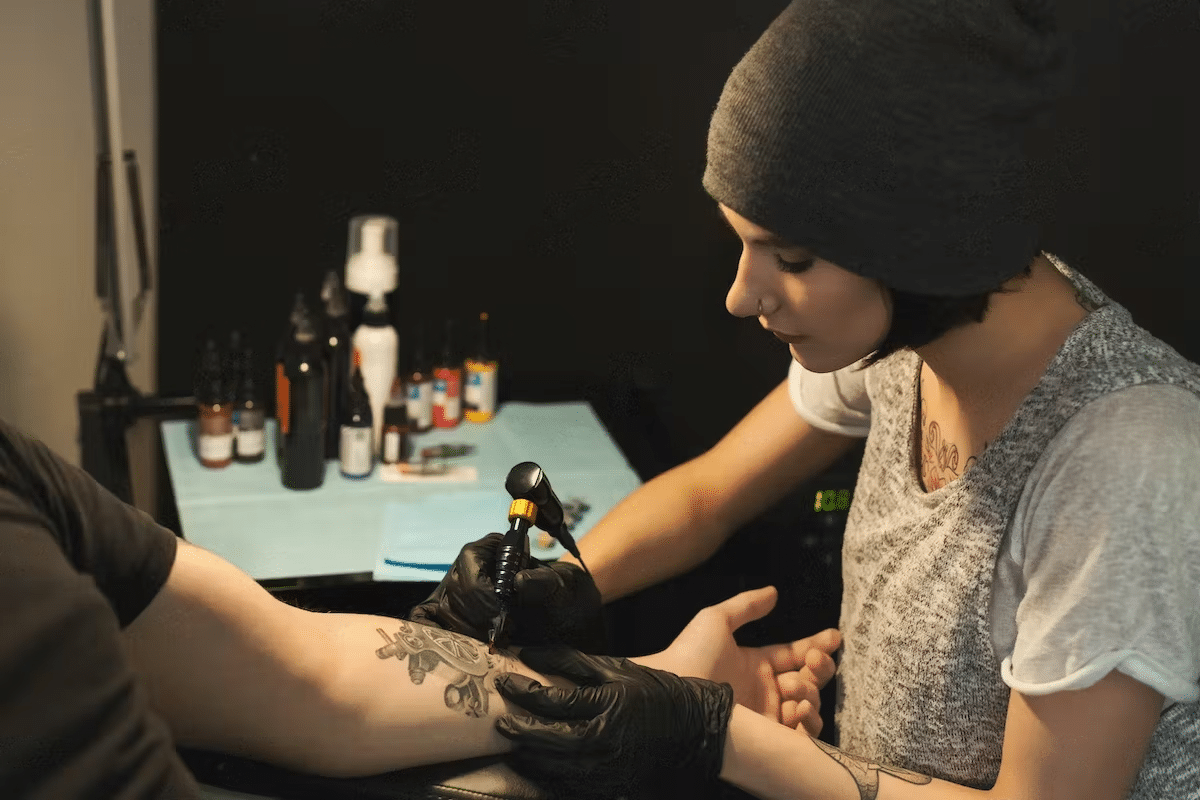 Tattoos have been used as a form of self-expression for centuries, and they continue to grow in popularity today. Whether you’re getting your first or tenth tattoo, knowing how to properly care for it is important, especially during the crucial healing process.We understand the importance of caring for your new tattoo at Pearl Lemon, so we’ve created this essential guide to help you clean your new tattoo safely.This blog will cover the basics of tattoo aftercare, including why it’s important, what you should and shouldn’t do, and how to clean your new tattoo properly. We will also provide tips and tricks to make the process as easy and effective as possible.Whether you’re a first-time tattoo recipient or a seasoned ink enthusiast, you will find all the information you need to take care of your new tattoo and keep it looking its best. So, let’s dive in and learn how to clean your new tattoo!
Tattoos have been used as a form of self-expression for centuries, and they continue to grow in popularity today. Whether you’re getting your first or tenth tattoo, knowing how to properly care for it is important, especially during the crucial healing process.We understand the importance of caring for your new tattoo at Pearl Lemon, so we’ve created this essential guide to help you clean your new tattoo safely.This blog will cover the basics of tattoo aftercare, including why it’s important, what you should and shouldn’t do, and how to clean your new tattoo properly. We will also provide tips and tricks to make the process as easy and effective as possible.Whether you’re a first-time tattoo recipient or a seasoned ink enthusiast, you will find all the information you need to take care of your new tattoo and keep it looking its best. So, let’s dive in and learn how to clean your new tattoo!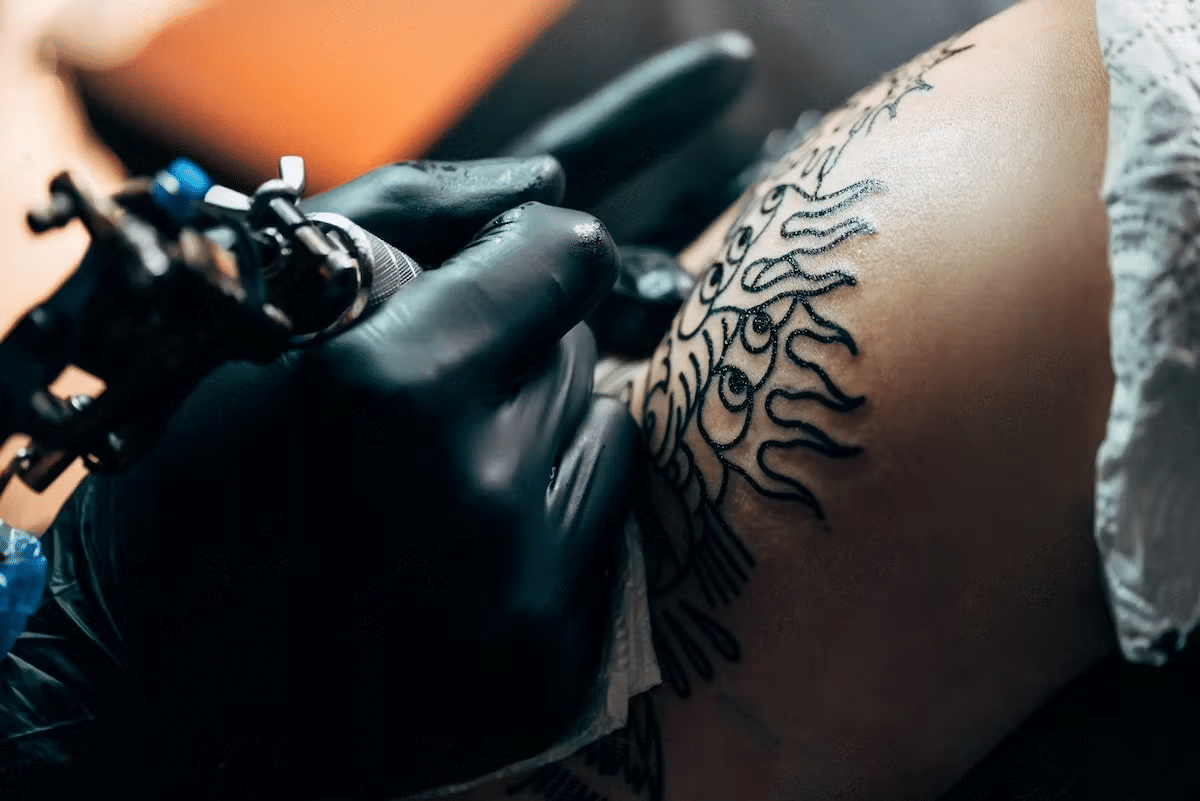 When you get a new tattoo, it’s important to understand the healing process to ensure proper care and avoid complications. Here’s an overview of the general healing stages:
When you get a new tattoo, it’s important to understand the healing process to ensure proper care and avoid complications. Here’s an overview of the general healing stages: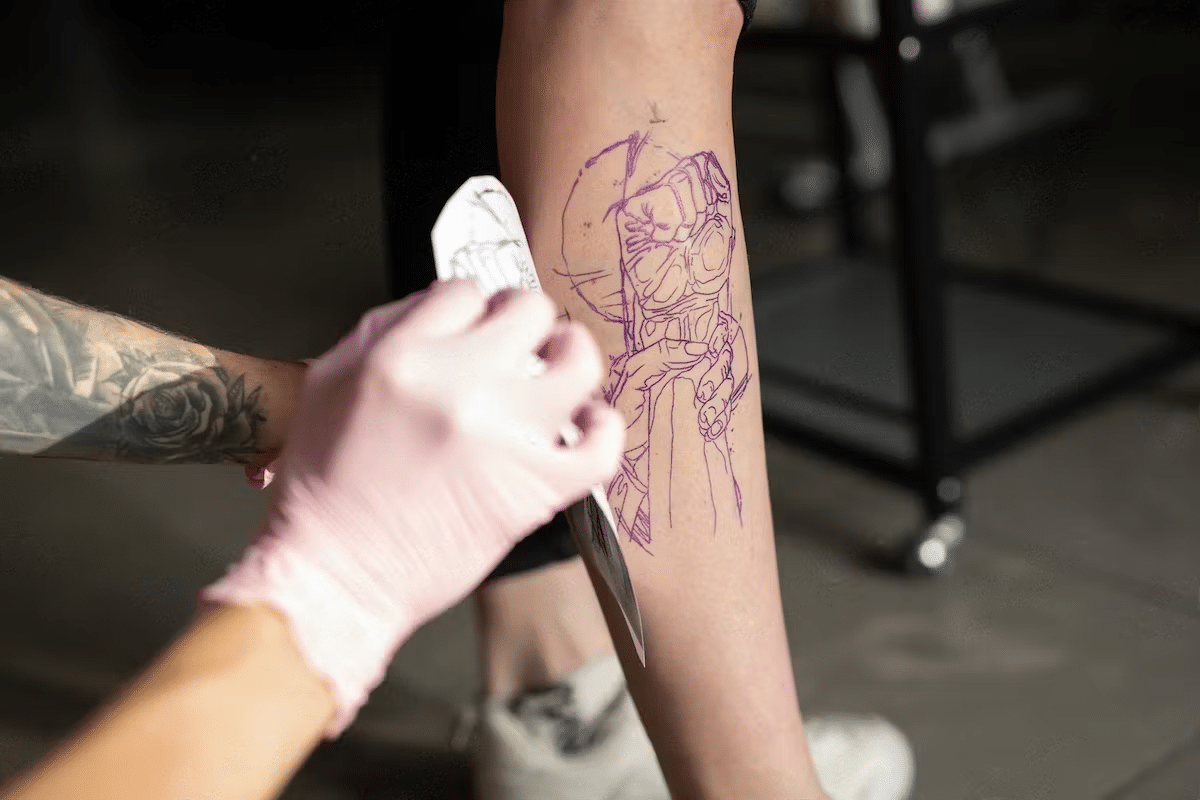 Proper aftercare for tattoos is crucial to ensure the best possible outcome for your new ink. A tattoo is essentially an open wound, and like any other wound, it needs to be treated with care and attention to prevent infection and promote healing.There are several reasons why proper aftercare for tattoos is important.Firstly, keeping your tattoo clean and moisturised will prevent bacteria from entering the wound and causing infection. Infection can lead to scarring, discolouration, and even the need for medical intervention.Secondly, proper aftercare can help prevent excessive scabbing and peeling, which can cause the tattoo to fade or lose its vibrancy. Scabs can also lead to scarring, which can affect the overall appearance of your tattoo.Lastly, proper aftercare can ensure that your tattoo looks its best for years. A well-cared-for tattoo will maintain its vibrancy and clarity, making it a beautiful work of art that you can be proud of for years to come.
Proper aftercare for tattoos is crucial to ensure the best possible outcome for your new ink. A tattoo is essentially an open wound, and like any other wound, it needs to be treated with care and attention to prevent infection and promote healing.There are several reasons why proper aftercare for tattoos is important.Firstly, keeping your tattoo clean and moisturised will prevent bacteria from entering the wound and causing infection. Infection can lead to scarring, discolouration, and even the need for medical intervention.Secondly, proper aftercare can help prevent excessive scabbing and peeling, which can cause the tattoo to fade or lose its vibrancy. Scabs can also lead to scarring, which can affect the overall appearance of your tattoo.Lastly, proper aftercare can ensure that your tattoo looks its best for years. A well-cared-for tattoo will maintain its vibrancy and clarity, making it a beautiful work of art that you can be proud of for years to come.
